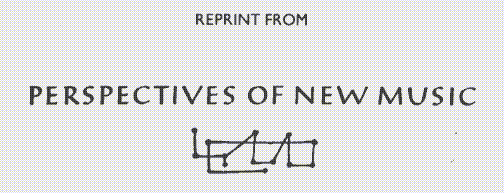 Fall-Winter 1981, Spring-Summer, 1982 (Vol. 20, nos. 1 & 2)
Fall-Winter 1981, Spring-Summer, 1982 (Vol. 20, nos. 1 & 2)
The Design and Construction of an Electroacoustic Monochord
Stewart Dickson
(Excerpts Paraphrased)
The principle behind the behavior of this instrument is the combination of effects which occur on vibrating strings when the length of the string is extended in the extreme, and when the point of excitation is moved to the very end of the string.
![]() Figure 1 shows
the effect of bow placement, or the point of excitation, on the harmonic output
of a bowed string. When the string is driven from the very end, the harmonic
series in flat, as shown in Figure 2.
Figure 1 shows
the effect of bow placement, or the point of excitation, on the harmonic output
of a bowed string. When the string is driven from the very end, the harmonic
series in flat, as shown in Figure 2.
![]()
When the string is extended to extreme length, the fundamental frequency of vibration is subaudio and the low-order harmonics are manifest as rhythmic elements. The first audible harmonics are at intervals of microtones, resulting in a continuously playable harmonic spectrum.
![]() Figure 3 shows
an example audio patching diagram of a performance installation of the
Electroacoustic Monochord. Current designs actually call for a polychord and
an eight-channel mixing console.
Figure 3 shows
an example audio patching diagram of a performance installation of the
Electroacoustic Monochord. Current designs actually call for a polychord and
an eight-channel mixing console.
When the transducer assemblies on the string are stereo, two signal channels are created along the axis of the string, which are acoustically coupled by the non-linearities of the string. The vibrational phase effects are audibly evident in the timbre of the instrument.
![]() Detail of the pickup transducer assembly, large string.
Detail of the pickup transducer assembly, large string.
![]() Detail of the driving transducer assembly, large string.
Detail of the driving transducer assembly, large string.
![]() An early design of the instrument installed for performance.
An early design of the instrument installed for performance.
Please see also later versions and installations of the instrument.